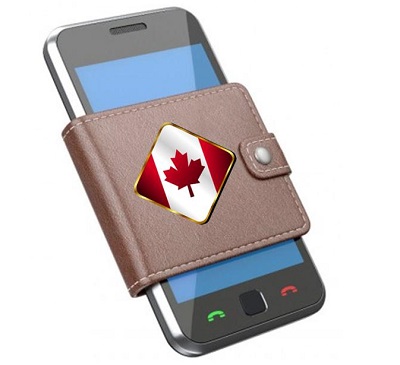New mobile payments apps are preparing for the launch of the iPhone’s own option.
As Apple Pay is now on its way to Canadian consumers, the UGO mobile wallet is getting itself ready to deal with a market that will have a much larger amount of stiff competition to face.
The mobile wallet was created by UGO Mobile Solutions LP, with the backing of two Canadian banks.
That mobile wallet was first launched in December, and has managed to accumulate 50,000 users since that time, but it is now facing a considerable threat as Apple Pay heads out of the United States and into some additional countries around the world. Users of UGO are able to complete mobile payments transactions through the credit cards that have been issued by either Toronto Dominion Bank or President’s Choice Financial. This allows users to pay for purchases by tapping their NFC enabled smartphones against wireless terminals installed at retail checkout counters. That app also supports the loyalty cards of those retailers.
Now, UGO and other mobile wallets are getting ready to have to contend with Apple Pay, a very large entry.
 UGO isn’t alone in facing the Apple mobile payments threat as it enters the Canadian space. Other local players such as Suretap – a mobile wallet created by Rogers Communications Inc, one of the largest wireless carriers in the country – is also finding itself preparing for the change in the competition.
UGO isn’t alone in facing the Apple mobile payments threat as it enters the Canadian space. Other local players such as Suretap – a mobile wallet created by Rogers Communications Inc, one of the largest wireless carriers in the country – is also finding itself preparing for the change in the competition.
Apple has already sent its mobile payments service into the United Kingdom and is going to take that service into a number of other countries, including Canada, before the end of the year. While many customers are interested in seeing their iPhone 6’s and 6 Plus’s in action at the checkout counter, it has yet to be known exactly how much interest there is in this market space among Canadians.
UGO is geared up to sign up as many active users as it can before the arrival of Apple Pay. Alec Morley, its chief executive officer, explained that the company is currently on track to serve 100,000 unique users by the end of the year, who will be using over 250,000 cards to pay for their purchases through this service.
SIX and Swisscom to develop a new payment service for consumers
SIX, Switzerland’s financial infrastructure operator, has teamed with Swisscom, one of the largest telecommunications companies in the country, in order to expand mobile payments throughout Switzerland. The two organizations will be working with banks in order to establish a nationwide mobile payments service, which may help accommodate the growing demand for such a service coming from consumers. Many people are beginning to rely on their mobile devices to shop online, and companies like SIX and Swisscom have new opportunities to engage these consumers and find success.
New service will be based on Paymit mobile application
The new mobile payments service will be based on an existing application called Paymit, which was launched by SIX through a partnership with other companies earlier this year. The application acts as a peer-to-peer transfer service that allows users to send and receive funds using information stored in their Paymit accounts. The new mobile payments service will not only support online transactions, however, as it will also enable consumers to make mobile transactions in physical stores. This functionality is expected to go live in early 2016.
Bluetooth or NFC technology will power transactions made through the service in physical stores
 NFC technology is likely to play a role in the new payments service, as it has formed the backbone of mobile commerce for several years. NFC has been criticized in the past for having some security issues, but the technology is still used quite heavily when it comes to mobile payments. Bluetooth could serve as an alternative to NFC, but the mobile payments services is still in early stages of development and no technology has yet been settled upon.
NFC technology is likely to play a role in the new payments service, as it has formed the backbone of mobile commerce for several years. NFC has been criticized in the past for having some security issues, but the technology is still used quite heavily when it comes to mobile payments. Bluetooth could serve as an alternative to NFC, but the mobile payments services is still in early stages of development and no technology has yet been settled upon.
Demand for mobile payments support continues to grow
Demand for mobile payments services has been on the rise in recent years. Large companies, such as Apple and Google, have already broken into this sector. For some, however, their payment services are not widely available outside of the United States. Despite this, consumers have found a wide range of mobile payments services that they have become interested in.
 UGO isn’t alone in facing the Apple mobile payments threat as it enters the Canadian space. Other local players such as Suretap – a mobile wallet created by Rogers Communications Inc, one of the largest wireless carriers in the country – is also finding itself preparing for the change in the competition.
UGO isn’t alone in facing the Apple mobile payments threat as it enters the Canadian space. Other local players such as Suretap – a mobile wallet created by Rogers Communications Inc, one of the largest wireless carriers in the country – is also finding itself preparing for the change in the competition.
 NFC technology is likely to play a role in the new payments service, as it has formed the backbone of mobile commerce for several years.
NFC technology is likely to play a role in the new payments service, as it has formed the backbone of mobile commerce for several years. 